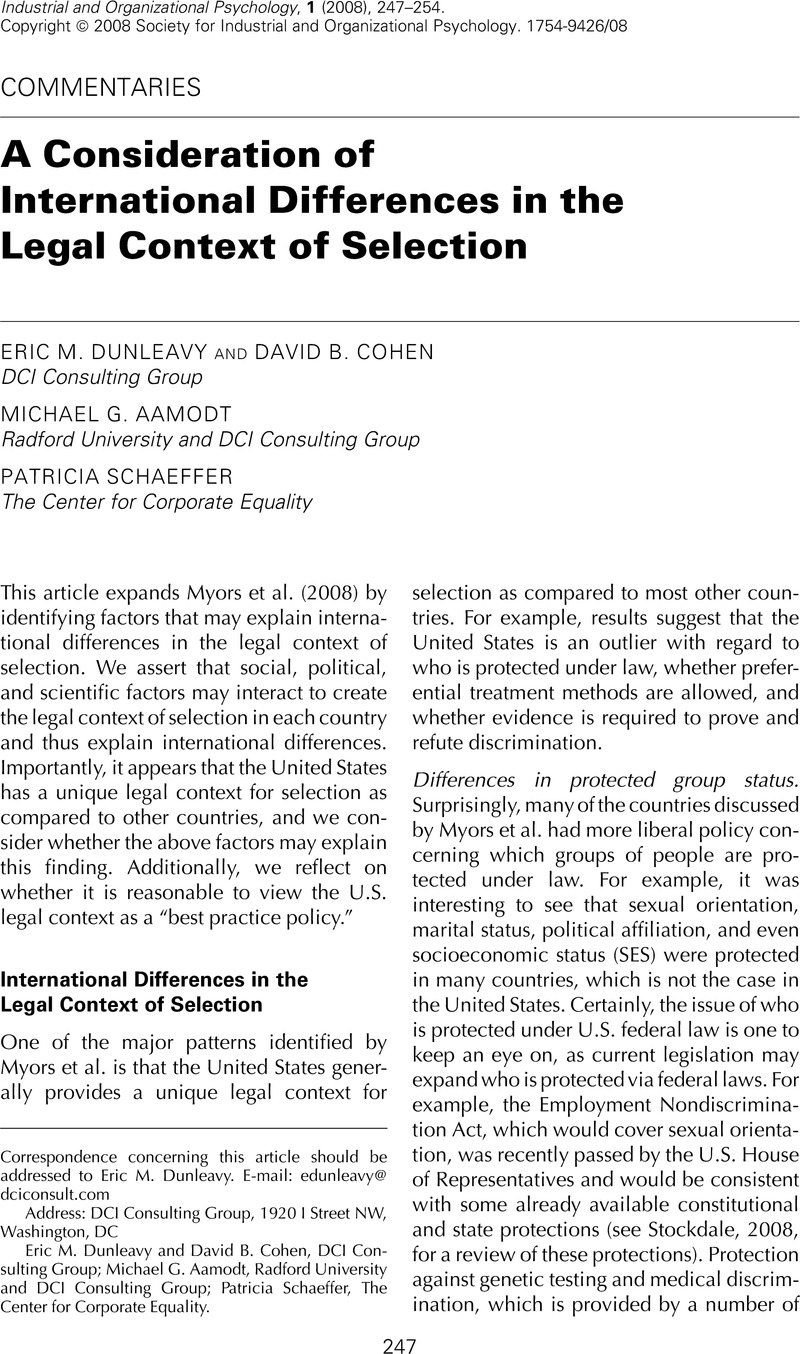Crossref Citations
This article has been cited by the following publications. This list is generated based on data provided by Crossref.
Myors, Brett
Lievens, Filip
Schollaert, Eveline
Van Hoye, Greet
Cronshaw, Steven F.
Mladinic, Antonio
Rodríguez, Viviana
Aguinis, Herman
Steiner, Dirk D.
Rolland, Florence
Schuler, Heinz
Frintrup, Andreas
Nikolaou, Ioannis
Tomprou, Maria
Subramony, S.
Raj, Shabu B.
Tzafrir, Shay
Bamberger, Peter
Bertolino, Marilena
Mariani, Marco
Fraccaroli, Franco
Sekiguchi, Tomoki
Onyura, Betty
Yang, Hyuckseung
Anderson, Neil
Evers, Arne
Chernyshenko, Oleksandr
Englert, Paul
Kriek, Hennie J.
Joubert, Tina
Salgado, Jesús f.
König, Cornelius J.
Thommen, Larissa A.
Chuang, Aichia
Sinangil, Handan Kepir
Bayazit, Mahmut
Cook, Mark
Shen, Winny
and
Sackett, Paul R.
2008.
Broadening International Perspectives on the Legal Environment for Personnel Selection.
Industrial and Organizational Psychology,
Vol. 1,
Issue. 2,
p.
266.
Cox, Cody B.
and
Barron, Laura
2012.
The Effects of Changing Anti‐Discrimination Legal Standards on the Evaluation of Older Workers.
Journal of Applied Social Psychology,
Vol. 42,
Issue. S1,
2017.
Global Leadership Talent Management.
p.
195.
Yusko, Kenneth P.
Bellenger, Brian L.
Larson, Elliott C.
Hanges, Paul J.
and
Aiken, Juliet R.
2017.
The Wiley Blackwell Handbook of the Psychology of Recruitment, Selection and Employee Retention.
p.
422.
Adams, Samantha
Görgens-Ekermans, Gina
and
De Kock, François
2018.
Graduate Applicant Intentions and Behavioral Beliefs.
Journal of Personnel Psychology,
Vol. 17,
Issue. 3,
p.
131.





